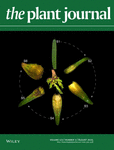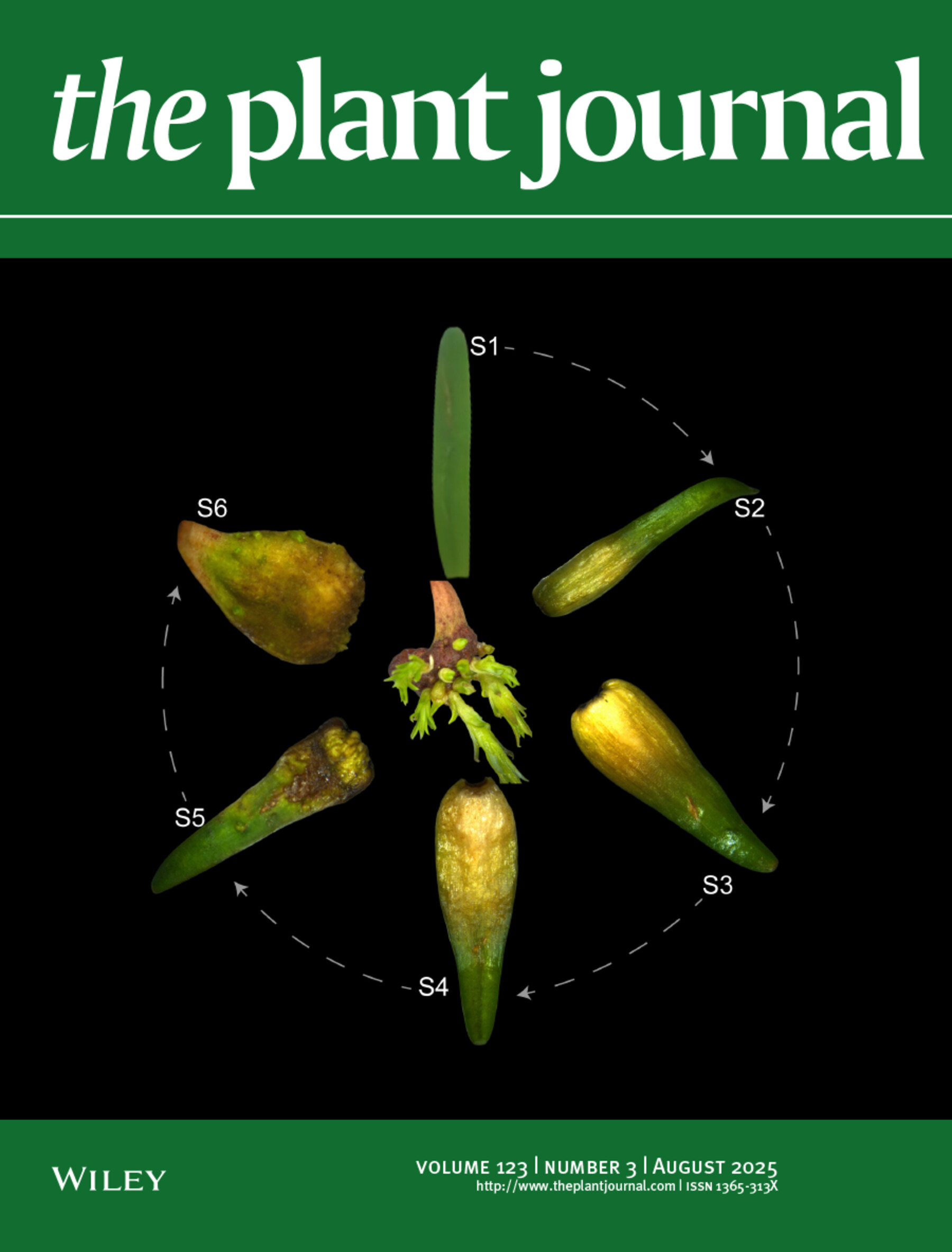Journal list menu
Export Citations
Download PDFs
ISSUE INFORMATION
Original Article
Transcription factor CitMYB16 positively regulates cutin and wax biosynthesis in citrus by directly activating CitDCR and CitKCS2
- First Published: 01 August 2025
In this study, a key transcription factor involved in cuticle formation, CitMYB16, was identified from citrus varieties with significant differences in cuticle content. Functional validation and transcriptional regulation experiments confirmed that CitMYB16 simultaneously promotes cutin and wax biosynthesis by directly binding to and activating the promoters of CitDCR and CitKCS2. These findings provide new insights into the transcriptional regulation of cuticle metabolism and deepen our understanding of the complex regulatory networks governing plant cuticle formation.
STEMIN transcription factor drives selective chromatin remodeling for gene activation within a relaxed chromatin during reprogramming in the moss Physcomitrium patens
- First Published: 01 August 2025
Using single-nucleus multiome analysis, this study reveals that wounding-induced cellular reprogramming in the moss Physcomitrium patens involves widespread chromatin relaxation, establishing a permissive state for stem cell formation. Furthermore, STEMIN transcription factors selectively enhance chromatin accessibility at key loci, underscoring a hierarchical interplay between chromatin remodeling and gene activation during reprogramming.
Technical Advance
An improved biolistic-based method (BPIS) for identifying protein interactions of transcription factors in plants
- First Published: 01 August 2025
Biolistic protein interaction screening (BPIS) is developed to study low-abundance transcription factor (TF) interactions, which use dual-labeled DNA probes and biolistic delivery to identify TF partners. It was validated in Betula platyphylla and Arabidopsis thaliana through multi-method verification, demonstrating high specificity and reliability. BPIS advances the study of TF-mediated regulatory networks, offering a robust tool for gene regulation research.
Original Article
PIF4-dependent 2-hydroxymelatonin and 3-hydroxymelatonin biosynthesis is involved in skotomorphogenic seedling growth in Arabidopsis thaliana
- First Published: 01 August 2025
Melatonin 2-hydroxylase and melatonin 3-hydroxylase, which are responsible for the synthesis of 2-hydroxymelatonin and 3-hydroxymelatonin, are induced during the night under the control of phytochrome interacting factor 4, and both 2-hydroxymelatonin and 3-hydroxymelatonin are involved in skotomorphogenic growth in Arabidopsis by upregulating gibberellin and brassinosteroid synthesis genes.
Knockout of TaOTUB1 homoeologs in wheat promotes increased grain yield and earlier flowering
- First Published: 01 August 2025
Grain size and flowering time are crucial for crop yield, but their synergistic regulation mechanisms are unclear. This study finds wheat TaOTUB1 homoeologs dual-regulate grain size and flowering time. Single-knockout of TaOTUB1-7A or -7B enhances yield by increasing grain size and accelerating flowering, interacting with TaRCN2 and TaSPL1. The HAPI haplotype with low TaOTUB1 activity correlates with higher grain weight, yield, and earlier flowering, offering genetic strategies to synchronize wheat yield and flowering time.
Salicylic acid influences the resistance of colored calla lily to soft rot (Pectobacterium carotovorum) via the TGA2-LNC88940-miR528-SOD module
- First Published: 01 August 2025
Soft rot severely reduces colored calla lily's ornamental and commercial value. This study identified LNC88940, significantly upregulated after infection, which acts as an endogenous target mimic for miR528, indirectly promoting SOD expression. Overexpressing LNC88940 enhanced resistance by reducing lesions, while silencing increased susceptibility. Salicylic acid induced LNC88940 via TGA2 binding its promoter. The TGA2–LNC88940–miR528–SOD module plays a vital role in soft rot resistance, advancing understanding of lncRNA regulation in ornamental crop disease defense.
Time-course transcriptome and proteomic dynamics during the de novo shoot organogenesis in Chinese fir (Cunninghamia lanceolata)
- First Published: 30 July 2025
An efficient DNSO protocol for Chinese fir was established, and the key molecular mechanisms regulating the DNSO process were revealed. By identifying dynamic transcriptomic and proteomic changes, particularly in ethylene metabolism and abiotic stress responses, these findings provide valuable insights for enhancing plant regeneration, with implications for biotechnology and sustainable forestry.





